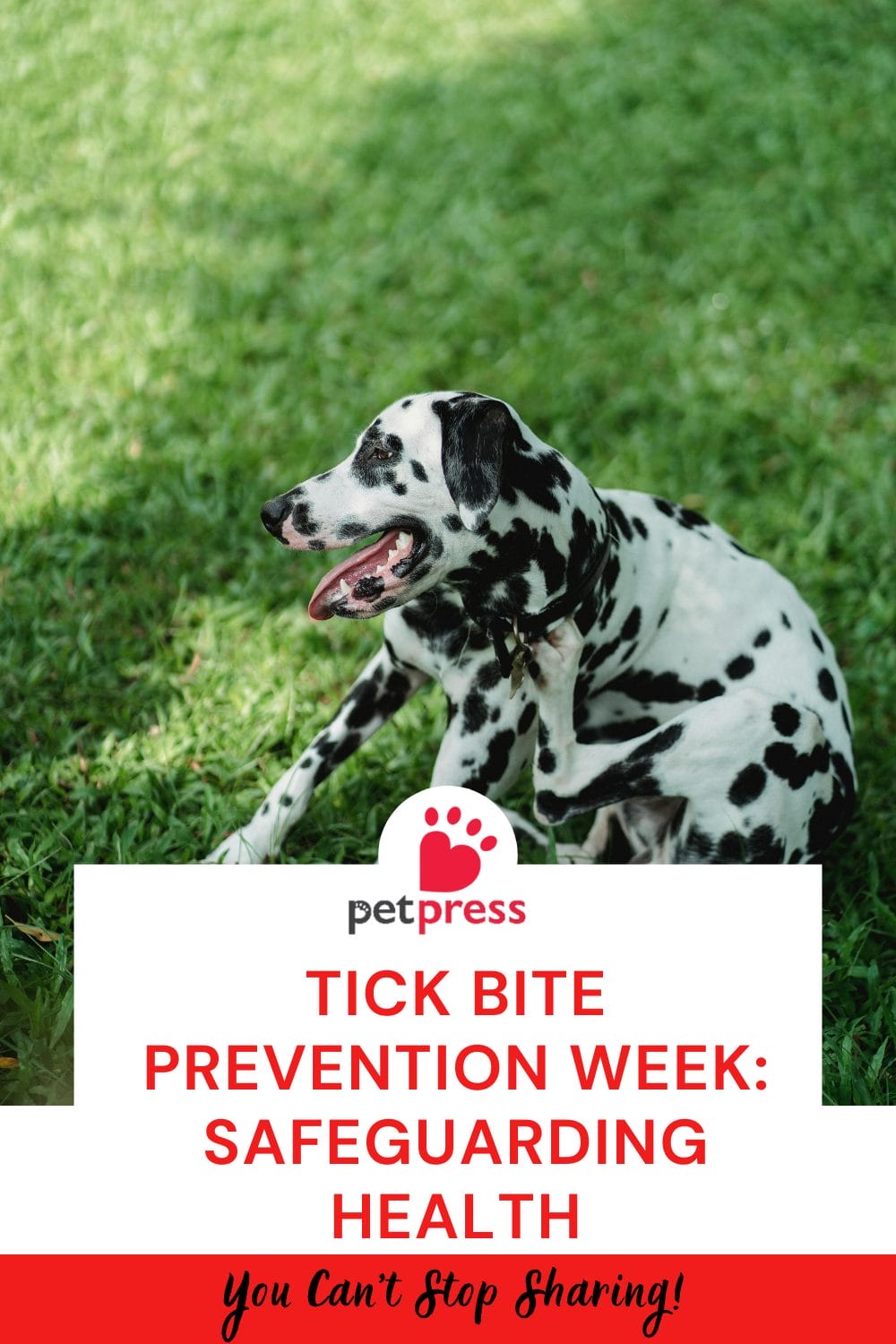
Tick Bite Prevention Week occurs annually in March. Ticks, tiny bloodsucking parasites, pose a significant threat by transmitting various diseases to both pets and humans.
Preventive measures are crucial in safeguarding against tick-borne illnesses, notably Lyme disease.
Here are some key facts about ticks: These parasites become active and seek hosts (both humans and pets) once the temperature reaches 4°C.
Tick Bite Prevention Week: What are ticks?
Ticks are diminutive, eight-legged arachnids ubiquitous across every continent, frequently inhabiting woodland, moorland, and grassland areas.
Exhibiting various species, ticks possess flat, oval-shaped bodies typically coloured reddish-brown or black.
Before feeding, they measure merely 1-3mm in length, rendering them challenging to detect. Sustaining themselves on the blood of other animals, ticks expand in size as they feed, often lightening in colour.
Following a meal, their bodies can extend to over 1cm in length, resembling the size and shape of a pea.
Tick Bite Prevention Week: How do animals (and people) get ticks?

Ticks necessitate attaching themselves to a host, be it an animal or person, to feed on blood.
Incapable of jumping or flying, ticks ascend onto grasses or leaves, patiently awaiting the passage of a host.
This enables them to drop onto the passing creature and affix it to its skin. Once attached, ticks may remain for several days, gradually consuming blood.
Their saliva possesses anaesthetic properties, often leaving the host unaware of the bite.
Tick-borne diseases vary by region and tick species. Some common ailments affecting both animals and humans include:
Lyme borreliosis (Lyme disease)
Caused by bacterial infection, marked by flu-like symptoms, joint pain, and fatigue.
While rarely life-threatening, untreated cases can escalate, affecting organs with worsening symptoms.
Notably, it may manifest with a circular “bullseye” rash, but this isn’t always present.
Babesiosis
Provoked by the microscopic babesia parasite, leading to red blood cell destruction and ensuing anaemia.
Symptoms encompass fever, chills, fatigue, and muscle pain, potentially progressing to life-threatening conditions without treatment.
Anaplasmosis
Resulting from bacterial infection, inducing fever, chills, headaches, and muscle pain.
Immunocompromised individuals may experience severe symptoms like breathing difficulties, neurological issues, or kidney failure. Fatal outcomes can arise without intervention.
Ehrlichiosis
Another bacterial infection causing fever, muscle pain, nausea, vomiting, diarrhoea, headaches, and appetite loss.
Dogs are particularly susceptible, exhibiting bleeding, low blood cell counts, neurological complications, and secondary infections. Chronic ehrlichiosis often proves fatal.
What should I do if my pet or myself gets a tick?

Prompt and careful removal of ticks significantly reduces the risk of disease transmission.
Avoid pulling ticks straight off, as this may cause their mouthparts to detach and remain in the skin, potentially leading to infection.
Additionally, squeezing a tick between fingers or tweezers can force blood back into the host’s bloodstream, heightening the risk of disease transmission.
Several methods for tick removal exist online, but the safest approach involves using a specialized tick removal tool, obtainable from veterinary practices, pet shops, or online retailers.
These tools enable twisting the tick off rather than pulling, minimizing the likelihood of leaving mouthparts behind or squeezing the tick’s body.
In the UK, ticks removed from humans or animals can be submitted to the UK Health Security Agency as part of the Tick Surveillance Scheme.
Although this initiative doesn’t test ticks for disease presence, it serves a vital role in monitoring tick species and distribution across the UK.
How to Celebrate Tick Bite Prevention Week?

Celebrate UK Tick Bite Prevention Week with these proactive steps:
- Educate Yourself and Others: Dive into learning about tick bite prevention and share your newfound knowledge with friends and family.
Raise awareness about Tick Bite Prevention Week to foster a safer environment for everyone. - Establish a Tick-Free Outdoor Space: Transform your outdoor areas into tick-free zones by eliminating potential habitats like tall grass and leaf piles. Incorporate tick-repellent plants to enhance your surroundings while keeping pests at bay.
Furthermore, you can use some tips to keep your pet safe in the woods. - Organize a Tick Bite Prevention Hike: Round up a group of peers or community members for an educational hike focused on tick bite prevention.
Equip yourselves with bug spray and conduct thorough tick checks post-hike to ensure everyone stays protected. - Craft Tick Bite Prevention Kits: Assemble handy kits containing essentials like tick repellent, tweezers, and a tick removal guide.
Share these kits with loved ones to empower them with the tools necessary to handle tick bites effectively.
By actively participating in these initiatives, you contribute to a safer, more informed community during UK Tick Bite Prevention Week.


GIPHY App Key not set. Please check settings